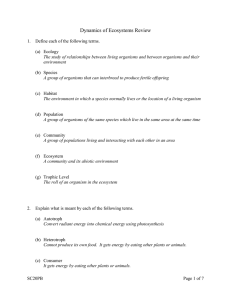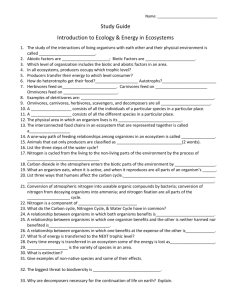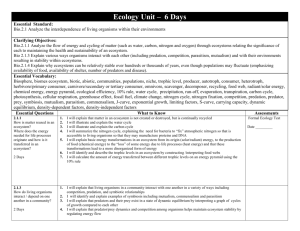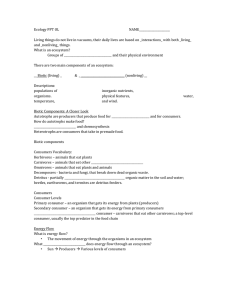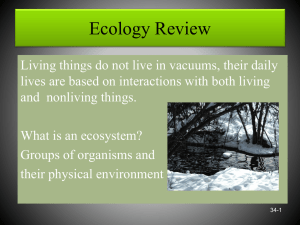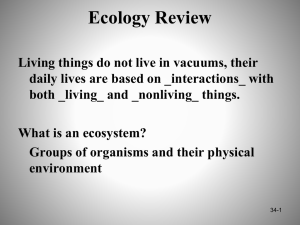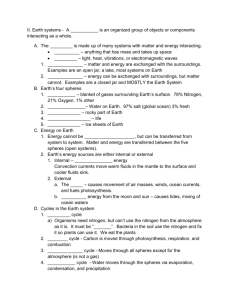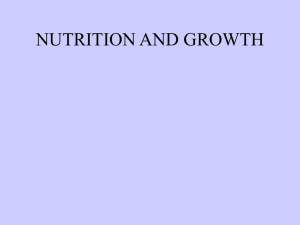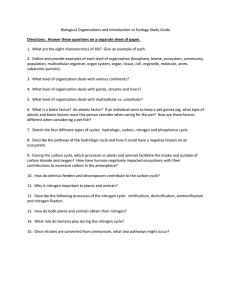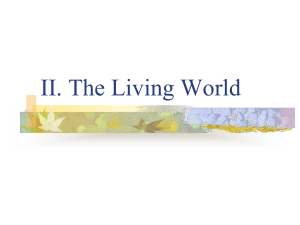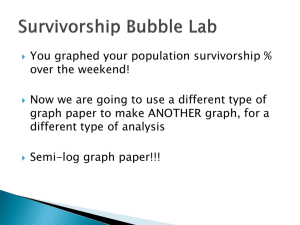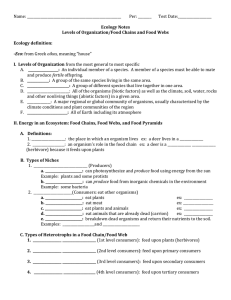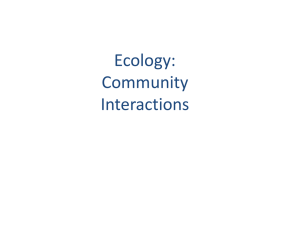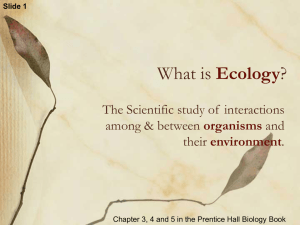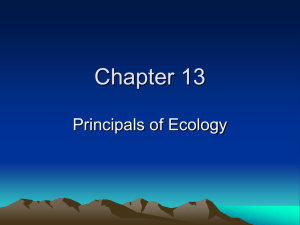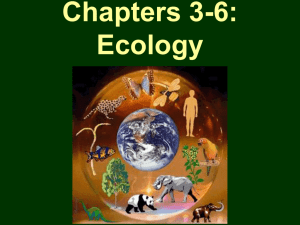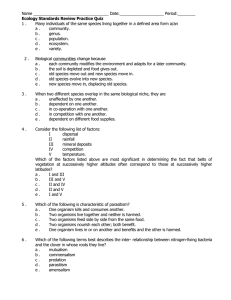Ecology Review Worksheet - TJ
advertisement
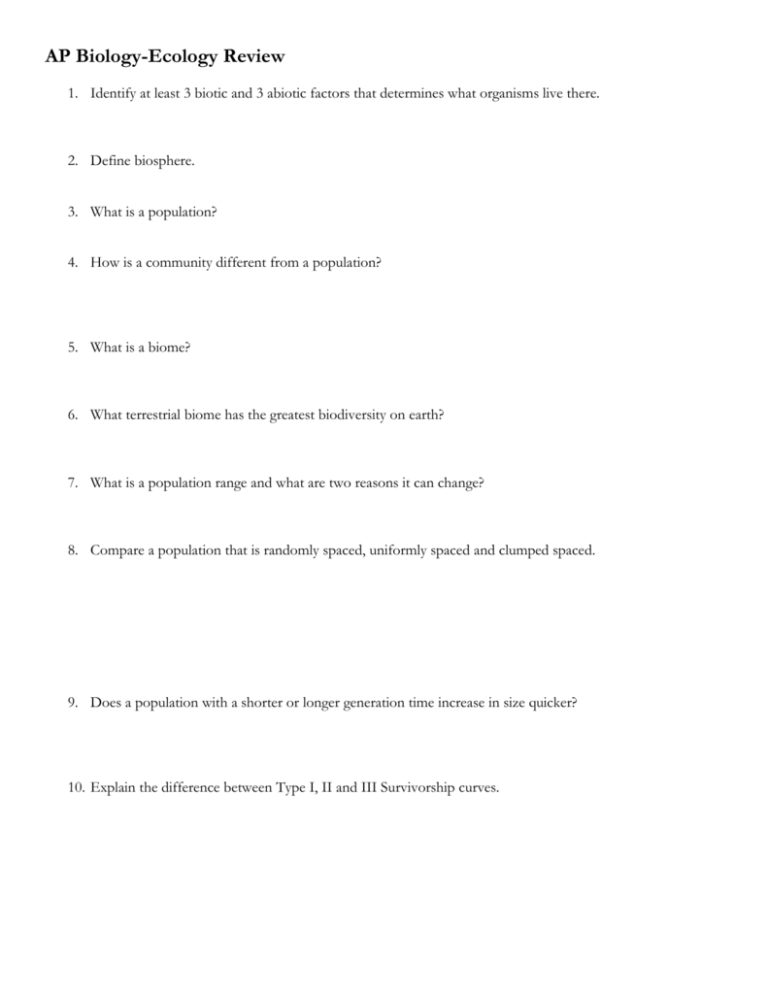
AP Biology-Ecology Review 1. Identify at least 3 biotic and 3 abiotic factors that determines what organisms live there. 2. Define biosphere. 3. What is a population? 4. How is a community different from a population? 5. What is a biome? 6. What terrestrial biome has the greatest biodiversity on earth? 7. What is a population range and what are two reasons it can change? 8. Compare a population that is randomly spaced, uniformly spaced and clumped spaced. 9. Does a population with a shorter or longer generation time increase in size quicker? 10. Explain the difference between Type I, II and III Survivorship curves. 11. Humans are an example of an organism with what type of survivorship curve. What does this mean? 12. What is carrying capacity (K)? 13. Explain the difference between exponential growth curve (J-curve) and a logistic growth curve (S-curve). 14. What are density dependent and density independent factors? 15. Give 3 examples of density-independent factors that help regulate populations. 16. What K-selected mean? What does r-selected mean? 17. Do humans show more r-selected life history traits or K-selected traits? How does this correlate with current global human population growth? 18. There has been an explosive growth of the human population over the past 300 years. Why is this occurring? 19. Explain the difference between interspecific and intraspecific completion. 20. Explain the term niche in detail. Use examples. 21. Define the principle of competitive exclusion. 22. When do two species that use the same resource NOT experience interspecific competition? 23. Why does the extermination OR the introduction of species to an area often lead to enormous impact on the ecosystem? Use at least one specific example in your answer. 24. Compare and contrast Batesian and Mullerian mimicry. 25. For each type of symbiosis listed below, explain the relationship and records a specific example: a. Commensalism – b. Mutualisms – c. Parasitism – 26. Explain the concept of keystone species. 27. What is succession? 28. Compare and contrast primary and secondary succession. 29. Explain the difference between a producer and a consumer. 30. What is a trophic level? 31. What is the ultimate source of energy for all ecosystems? 32. Compare and contrast the terms: food chain and food web. 33. What type of information does a population pyramid provide? 34. Why does the amount of energy present in the primary producer level represent the TOTAL amount of energy available for higher trophic levels? Why does only 10% get passed forward from each level? 35. What is the role of decomposers in a food web? 36. What is primary productivity? How are net and gross primary productivity different? 37. Assume that 1000 Joules of energy is available via a sun-like source to an ecosystem. About how much energy would a tertiary consumer gain? 38. Why do the numbers of organisms and the energy of each level generally produce a pyramid form graphically? 39. As temperature increases, water holds (less/more) oxygen. Why would this be considered a limiting factor? 40. Why are photosynthetic organisms confined to the upper few hundred meters of water in a marine ecosystem? 41. The earth is a (closed/open) system with respect to chemicals and an (closed/open) system with respect to energy. 42. Briefly describe the following. a. Carbon cycle – b. Nitrogen cycle – c. Phosphorus cycle – 43. How does cutting down a forest break the water cycle? 44. The carbon cycle refers to carbon fixation, or carbon fixing , in photosynthesis. What can you infer carbon fixation to mean? 45. How is carbon returned to the atmosphere? 46. What roles to photosynthesis and respiration, respectively, play in the carbon cycle? 47. Why is nitrogen important to life? 48. Why does nitrogen need to be “fixed” for living organisms to use? 49. What role do bacteria play in the nitrogen cycle? 50. Explain the how CO2 emissions have contributed to an increase of the greenhouse effect.




